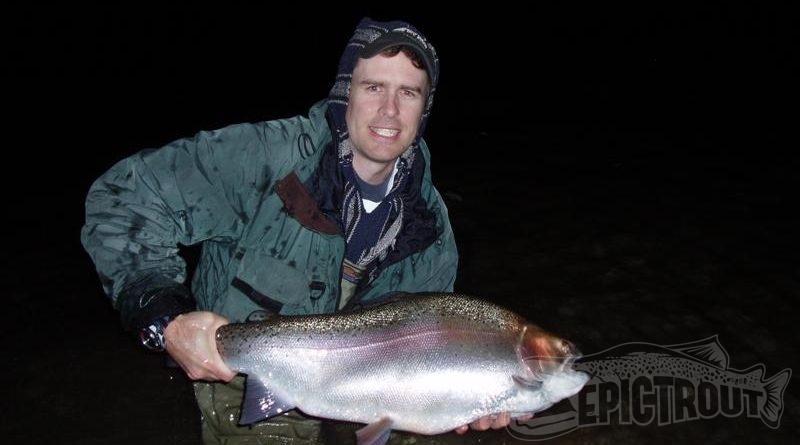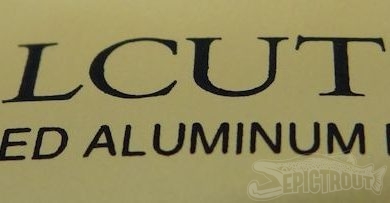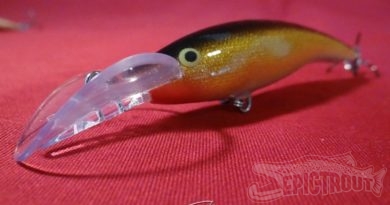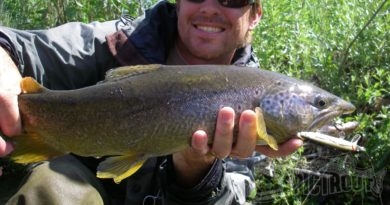Triploids!
When people hear the word triploid, many think of a nasty, snub-nosed, monster fish…. a franken fish that is not of this world. Maybe it has some missing fins, doesn’t fight great and probably came straight from the hatchery after being hand fed pellets for several years. One might hardly consider them a trophy. You might catch a triploid in a stocked pond or pay to play lake in Southern California… lakes like Corona, Irvine or Santa Ana River Lakes.
What if I told you that you have probably already caught a triploid and didn’t even know it? What if I told you that triploids are a perfect match for many of our lakes and you should expect to see more and more of them being stocked around the nation? What if I told you that they are a great solution to many management problems and you need to get used to them?
Think about this. If a trout is stocked in a lake that doesn’t have an inlet for viable spawning… then that trout is basically going to waste 2 months of his/her growing season looking for moving water and trying to spawn. During this period of time that trout will not feed, lose weight, regenerate scales and generally be less of a conditioned gamefish than it would have been the rest of the year.
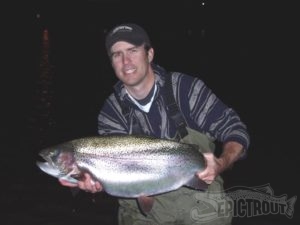
Also, if that trout is stocked into a lake with inlets then it may head up into that moving water to spawn. If there are native populations then cross spawning may occur, diluting the gene pool of the endemic populations. From a fisheries management point this is a nightmare and may limit what can be stocked in that lake.
Triploids solve both of these issues. But let’s back up a bit. What is a triploid? Here is the basic version. When trout spawn the mother’s egg starts with two chromosomes and the fathers milt (sperm) has one chromosome. After the egg is fertilized then the typical egg is left with two chromosomes known as a “diploid”. Sometimes, (very rarely) in nature there is a rapid change in pressure or temperature at just the right time, the third chromosome will not drop off and the trout will retain the three chromosomes. This is known as “triploidy”. If a trout retains the third chromosome then they will not develop their sexual traits as a normal trout would. Female triploids don’t develop any eggs and male triploids won’t develop viable sperm. This allows them to continue to feed and grow during the spawning season, thus growing larger than their diploid counterparts.
Fisheries managers have been refining the triploidy process in hatcheries and each year we have better survival rates and learn more about which species respond best to the process. Some hatcheries use a heat shock, some a pressure shock and others a combination of the two to induce triploidy. When these triploid trout are stocked as fingerlings they typically grow larger because they are feeding year-round and not losing condition to spawning efforts.
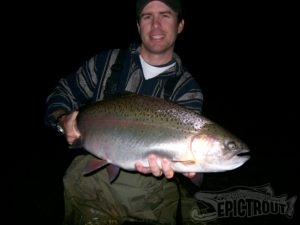
Jumping back to why they are a great solution to a major problem. Now, fisheries managers can stock these triploid trout into any water body without the fear of cross spawning with other populations of trout. Not only that, but from an angler’s perspective… they offer great sport, year round without the loss of condition. This is great news for us, the angler. While in years past, management would decide to remove stocking of any hatchery trout in bodies of water with populations of wild trout that they were concerned about. They now have an option to plant catchable trout for us to enjoy.
I think you can see why I am so excited about the prospects. We all need to get over any negative connotation associated with the word triploid and learn to embrace them. They aren’t much different than a hybrid trout… and many people travel to Henry’s Lake each year to chase the giant hybrid cuttbows without a second thought. You will be seeing more and more of them and catching more and more of them as they proliferate the trophy trout scene. There will be a point in the future where we will not care of they are triploid or diploid. In the mean time, educate your fellow angler and spread the word about a part of the future of trophy trout!

